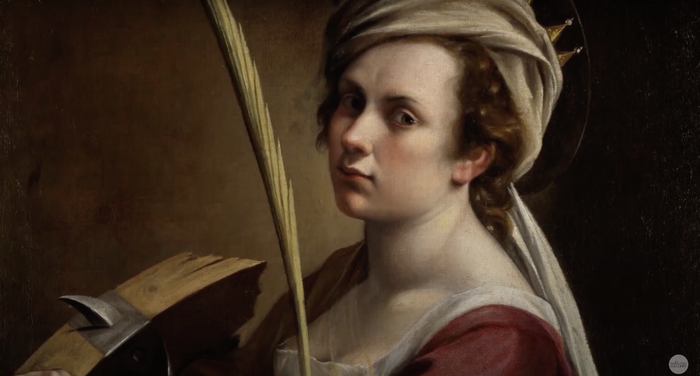Fitz Favourites: La Place Clichy
Harry Goodwin explores the many layers of Renoir’s La Place Clichy
Name an ironic backhander – charming, sweet, harmless – and it seems apt for Pierre-Auguste Renoir’s pretty respectable paintings of pretty, respectable women. How chic! How elegant! the French Impressionist seems to burble, insistent that everyone everywhere knows just how much he likes the opposite sex. How clingily annoying, viewers of any gender might retort.
You wouldn’t know from a Renoir canvas that women, like men, live lives replete with humour and hubris, darkness and desire; that they are, in fact, human beings. Nor would you know that Renoir himself had lived such a life (minus humour – too biting, too bold a sin against niceness). Scratching the surface of his paintings, we find only more surface. Something turned him into a walking platitude, a sponge cake made flesh. Where was the feeling, hurting man in him?
It’s a masterclass in human misunderstanding. You get to know a person; you arrive at some point where, you think, there is nothing more to know – a firewall of shallowness and triviality. He’s just a dick; she’s just a square. And you’re always wrong. It turns out, astonishingly, that Renoir (1841-1919) knew only poverty in youth, and only loneliness in middle-age. Later in life, arthritis turned his fingers into paralysed rods of pain. A grizzled stoic would find it a tricky hand to play; it must have been nearly unbearable for an eager-beaver like Renoir. Nice-guy posturing gets you nowhere when all the world’s malice comes rushing in.
Perhaps women took on for him a mystical cachet as the not-Renoir, the only part of life untainted by his personal misery and unburdened by his masculine geniality. Hence the frothy flatness. Painting them again and again and again – succumbing totally to a kind of painterly addiction – was Renoir’s only weapon against insanity. Nothing else energised him. His still life Apples and Walnuts (c.1865), in the Fitzwilliam, contains an array of vaguely fruit-like objects looking like neither apples nor walnuts. The Gust of Wind (1872), an experimental landscape, is a half-baked effort at carrying coals to the Newcastle of Monet and Cézanne. His eyes just aren’t on the job.
Renoir is escapist to roughly the same degree that sugar is sweet. But sadness seeps in, as it always does. The Fitzwilliam’s Return from the Fields (1886) is a good-bad painting, betting everything on cheap compositional tricks and showing no eye for detail. If you can draw and colour-in animals, you can equal it. If, like me, you can’t, some humility is due: the painting works, in its plodding amateur-dramatic way. A plump Breton milkmaid keeps a concerned eye on a little lamb while a big ox tugs at her arm. The contrast between the two animals uncovers a gentle tension at the heart of the French feminine pastoral: the maid must be at once caring and sturdy, soft and hard. Taxing work, no doubt. Even women, Renoir seems to concede, must endure life as often as they enjoy it.
Renoir’s squeamishness about anything disagreeable – shadows included – made him a master of orchestral colour contrasts. The way he moves pigments across a canvas is sometimes beautiful, swarming with far more emotion than the compositional facts of the matter seem to warrant. That’s male romantic fervour for you. La Place Clichy (c.1880) entwines balmy yellow and lyrical violet in an elegiac duet. A chic, gentle-looking young woman looks out on a Parisian square while hard-faced men waddle past. Lovely slanting brushstrokes depicting the woman’s hat and clothes caress what they describe; a tangle of auburn hair flops sweetly onto her neck. True to form, Renoir is spellbound.
Big city, lonely crowd – we seem, as so often with Renoir, to be in the realm of cliché. Look again. A steep perspectival scheme which blurs as it recedes suggests lost-in-thought melancholy. There is something of eagerness in the woman’s expression, and something of disappointment too. So this is life. How charming, how sweet, how harmless it once appeared.
 News / Caius mourns its tree-mendous loss23 December 2025
News / Caius mourns its tree-mendous loss23 December 2025 Comment / Yes, I’m brown – but I have more important things to say22 December 2025
Comment / Yes, I’m brown – but I have more important things to say22 December 2025 Interviews / Politics, your own way: Tilly Middlehurst on speaking out21 December 2025
Interviews / Politics, your own way: Tilly Middlehurst on speaking out21 December 2025 News / King appoints Peterhouse chaplain to Westminster Abbey22 December 2025
News / King appoints Peterhouse chaplain to Westminster Abbey22 December 2025 News / Clare Hall spent over £500k opposing busway 24 December 2025
News / Clare Hall spent over £500k opposing busway 24 December 2025









